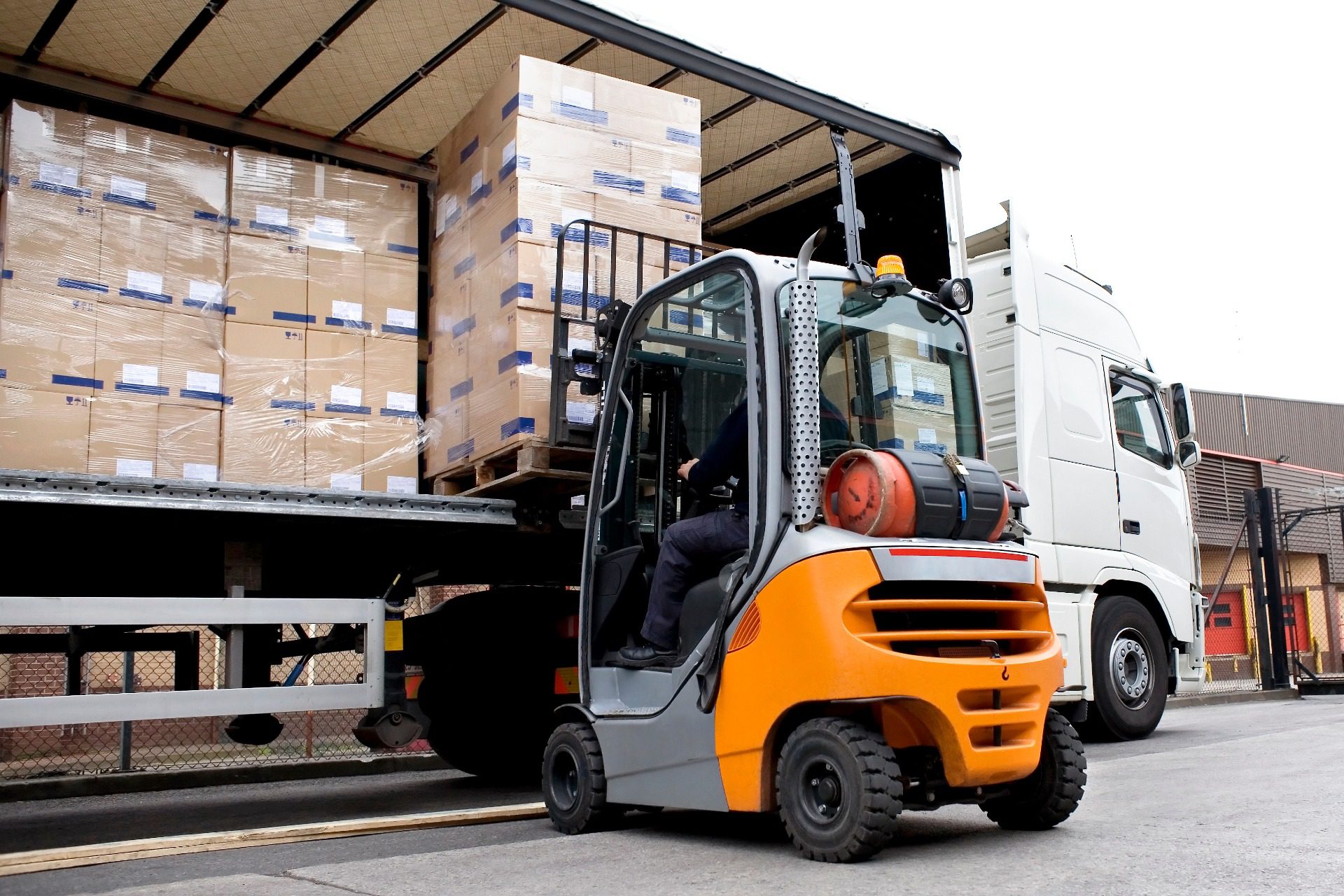Pallets are great resources for business owners shipping product. Not only do they help protect items during transit, they also maximize space and drastically reduce load and unload times for carriers, making the entire process of shipping and delivering goods more efficient.
Learn everything you need to know about pallets, from industry terminology to regulations to standard pallet size in the ShipCalm pallet size guide.
What Are Pallets?
Pallets are traditionally and most often made out of wood, but can be constructed from plastic, paper, metal or recycled materials. They are flat structural foundations on which goods are loaded and secured on for transport. Goods are neatly loaded onto a pallet and secured with shrink wrap or strapping.
Prior to the popularity of pallet use beginning in the 1930s, skids were commonly used in shipping. Skids are similar to pallets except they only have a single deck as opposed to the stronger pallets, which are double faced, meaning they have support on both the top and bottom sides of the structure.
If you ship on wooden pallets, it’s important to understand the sizing options available. Pallet sizing is not standard in the shipping industry, so with all of the options out there, you need to be sure you understand what you’re dealing with.
What Is the Size of a Standard Pallet?
Currently, there is not yet one single globally accepted pallet sizing system. However, there are some general standard sizes that are common, depending on location, region and industry. Some trade associations, such as the Grocery Manufacturers Association (GMA), strongly suggest and influence the use of standard pallet dimensions based on their own unique preferences. The GMA prefers pallets be 40” x 48,” and this sized pallet is now actually referred to as GMA pallets.
Another important factor when it comes to pallet sizing is not the actual size of the pallet itself, but rather how tall or high you can load it. Pallet height again is not standard, but many trucking companies have a max height you must adhere to. As a general rule, keeping pallets at 72” max is recommended to ensure you’re within the required max height allowance for trucking companies. ShipCalm offers pallet racks that allow for maximum height accommodation without the hassle of restacking a pallet that may end up too tall.
ISO Pallet Sizes
In an attempt to create universal standard pallet size guidelines, the International Organization for Standardization (ISO) created an approved list of six common pallet dimensions that are currently used globally.
| Dimensions (W x L – inches) | Dimensions (W x L – mm) | Unused Floor Space (in 40′ ISO Container) | Region Most Used |
|---|---|---|---|
| 40.00 x 48.00 | 1016 x 1219 | 3.7% | North America |
| 39.37 x 47.24 | 1000 x 1200 | 6.7% | Europe, Asia |
| 45.90 x 45.90 | 1165 x 1165 | 8.1% | Australia |
| 42.00 x 42.00 | 1067 x 1067 | 11.5% | North America, Europe, Asia |
| 43.00 x 43.00 | 1100 x 1100 | 14.0% | Asia |
| 31.50 x 47.24 | 800 x 1200 | 15.2% | Europe |
Standard pallet Sizes in North America
North American pallet sizes vary depending on materials and industry as well as other specific needs. That said, the above-mentioned GMA standard pallet size that’s 40” x 48” is so common in North American shipping, it accounts for 30% of all wooden pallets in the region.
| Dimensions (W x L – inches) | Dimensions (W x L – mm) | By Industry |
|---|---|---|
| 40.00 x 48.00 | 1016 x 1219 | Grocery, Others |
| 42.00 x 42.00 | 1067 x 1067 | Paint, Telecommunications |
| 48.00 x 48.00 | 1219 x 1219 | Drums |
| 48.00 x 42.00 | 1219 x 1067 | Beverage, Chemicals |
| 40.00 x 40.00 | 1016 x 1016 | Dairy |
| 48.00 x 45.00 | 1219 x 1143 | Automotive |
| 44.00 x 44.00 | 1118 x 1118 | Chemicals, Drums |
| 44.00 x 44.00 | 1118 x 1118 | Chemicals, Drums |
| 36.00 x 36.00 | 914 x 914 | Beverage |
| 48.00 x 36.00 | 1219 x 914 | Beverage, Packaged Paper, Shingles |
| 35.00 x 45.50 | 889 x 1156 | Military, ½ ISO containers |
| 48.00 x 20.00 | 1219 x 508 | Retail |
Standard Euro Pallet Dimensions
European pallets, also known as EUR-pallets, Euro-pallets and EPAL-pallets, are the standard pallet size set forth by the European Pallet Association. The benefit to the European system is a the “pallet for pallet” exchange.
| EURO Pallet Type | Dimensions (W x L – mm) | Dimensions (W x L – in) |
|---|---|---|
| EUR 1 | 800 x 1200 | 31.5 x 47.24 |
| EUR 2 | 1200 x 1000 | 47.24 x 39.37 |
| EUR 3 | 1000 x 1200 | 39.37 x 47.24 |
| EUR 6 | 800 x 600 | 31.5 x 23.62 |
| 600 x 400 | 23.62 x 15.75 | |
| 400 x 300 | 15.75 x 11.81 |
Australian Pallet Sizes
Australia has a pallet size that’s common throughout their country, but not often found elsewhere in the world. Pallets used here can be made of hard or softwood and they’re known for durability and are good for very heavy loads. They are designed to be a perfect fit for and used with the RACE containers in Australia’s railways.
| Dimensions (W x L – mm) | Dimensions (W x L – in) | By Industry |
|---|---|---|
| 1165 x 1165 | 45.90 x 45.90 | Grocery, Others |
What is ISPM-15?
The Internationals Standards for Phytosanitary Measures No. 15 (ISPM-15) refers to requirements mandated for any wood packaging 6mm or thicker that crosses international boundaries. The purpose of ISPM-15 is to prevent the spread of wood diseases and insects that could have a harmful impact on various ecosystems around the world. Compliance can be achieved through fumigation and heat treatment. Newer techniques are being explored, including steam and vacuum as well as dielectric heat.
Making Sure Your Wood Pallets are ISPM 15 Compliant
Maintaining compliance is simple using the effective and environmentally-friendly method of heat treating, which is the most common pallet treatment option. During this process, wood packaging materials (WPM) are heated to an internal temperature of 132.8℉ (56℃) for at least 30 minutes. The process of fumigation is being phased out, but other newer options are being looked into.
What are Pallet Boxes?
Pallet boxes are the large, standard boxes that are attached to pallets to stack and ship goods. They are also known as a bulk box or bin box. They’re used for shipping product in bulk quantities and can sometimes have a lid. The major advantage to pallet boxes is that they can be stacked when they are loaded.
Ready to learn more about using pallets for shipping? Reach out to ShipCalm today to find out how we can help you with all your pallet shipping needs. We are pallet shipping experts, so you can trust us!




